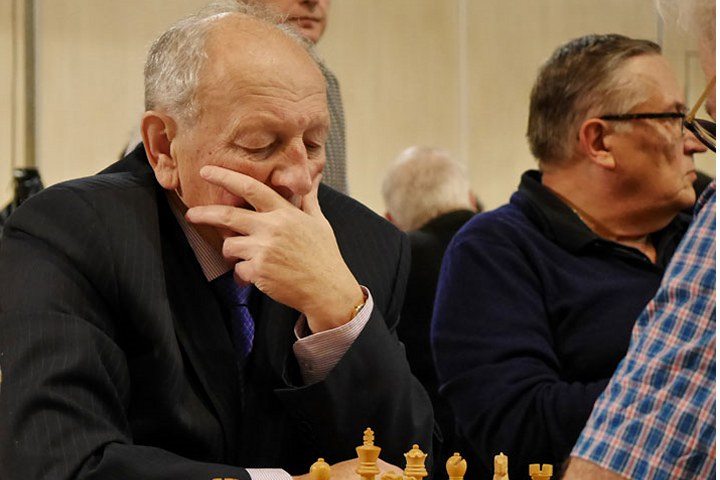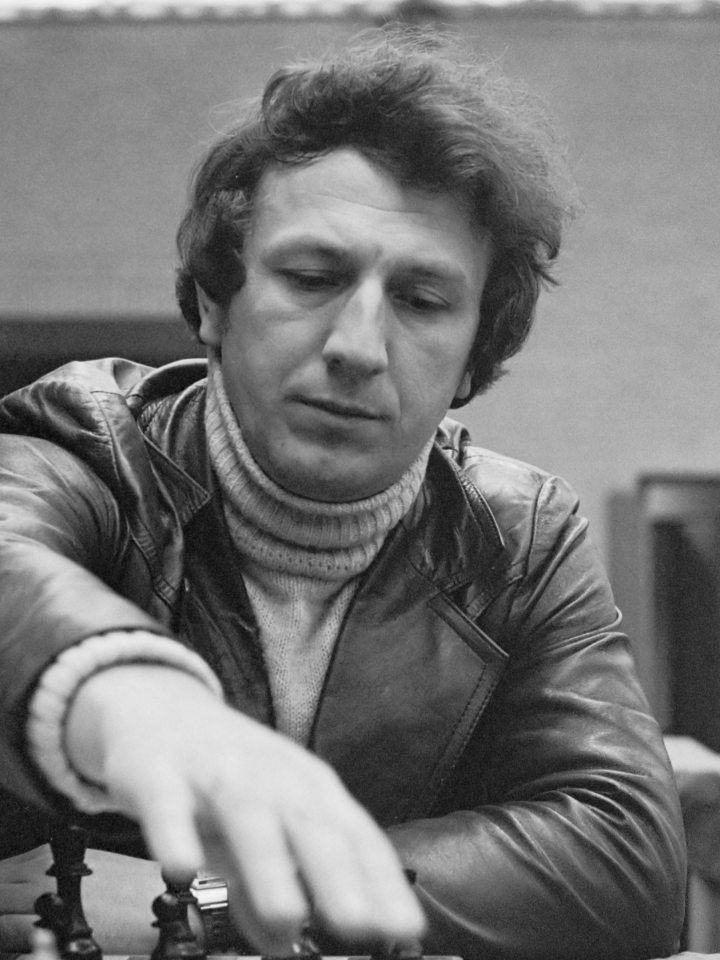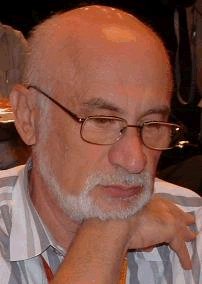


Evgeny Sveshnikov's name is familiar to every serious chess player because one of the most popular systems in the Sicilian defence — the Sveshnikov variation — was named after him.
This line currently has an important place in modern opening theory and typically arises after the moves 1.e4 c5 2.♘f3 ♞c6 3.d4 cxd4 4.♘xd4 ♞f6 5.♘c3 e5 6.♘db5 d6:
The main predecessor is a consultation game where Emanuel Lasker tried this idea, though not quite in its current form, way back in 1910:
After that, the idea was more or less forgotten and was only used sporadically, for example by Georg Kieninger in the late 1940s. In the mid-1950s, the Czech Jiří (Jorge) Pelikán, who emigrated to Argentina, brought back this defence and tried it regularly enough that it was called the Lasker-Pelikan variation.
In the early 1970s, the two Chelyabinsk players Gennady Timoshenko and Evgeny Sveshnikov improved on the variation and began playing it regularly. At times the opening was also known as the Chelyabinsk variation, but ultimately the name Sveshnikov became prevalent.
Going against all positional principles, Black accepts a permanent weakness in his position — an irreparable hole on d5 — yet the black players showed that there is excellent dynamic compensation for it.
After this discovery, however, it took some time for this system to be used by the world's best. But after Valery Salov, Alexej Shirov and Vladimir Kramnik regularly employed the Sveshnikov with great success in the early 1990s, the system became a common guest even at the top tournaments.
Of course the latest high profile proponent is World Champion Magnus Carlsen who chose the Sveshnikov as his main weapon against 1.e4 in his last World Championship fight against Fabiano Caruana.
Today one of the pioneers, Evgeny Sveshnikov, is celebrating his 70th birthday. As noted above, Sveshinikov was born in Chelyabinsk — on February 11, 1950. At the age of two he already learned to play checkers. When he was five years old, his father also taught him how to play chess. Sveshnikov was soon able to defeat his father and grandfather, but only played within the family. When he was eight years old he went to a summer camp for children and teenagers, took part in a chess tournament and won it. His ambition was piqued. From then on, Sveshnikov regularly visited the chess group at the local Pioneers Palace. His teacher there was Leonid Aronovich Gratvohl. Gratvohl later emigrated to Israel, but Sveshnikov kept in touch with his first and only chess teacher.
After completing school, Sveshnikov studied engineering and after completing his degree, now 24 years old, he was supposed to be doing his military service. Thanks to his chess skills however, he was able to avoid military service and become a tournament player. Sveshnikov jumped at the chance.
At the age of 17, Sveshnikov played for the first time in the USSR championship. The 35th USSR national championship, 1937 in Kharkov, was played, unusually, in the Swiss system. During his long chess career, Sveshnikov took part in countless other tournaments and, according to his own account, he won over 100 tournaments. He won the international tournaments Decin 1974, the Chigorin Memorial 1976, the Capablanca Memorial 1979, the 51st USSR Championship 1983, Hastings 1984/85, the Chigorin Memorial 1985, Moscow 1989, Podolsk 1983 and the Keres Memorial (1984).

Evgeny Sveshnikov 1981 | Dutch National Archive
Sveshnikov also won the Latvian national championships in 2003 and 2010. Between 2004 and 2010 he represented Latvia four times at the Chess Olympiad. In 2016, he was on board one of the Russian winning team at the senior team championship over-65. In 2017, he became Senior World Champion among 65+.
At the end of the 1970s, Evgeny Sveshnikov was one of the 25 best players in the world. At the height of his career, he had played against a number of top players, sometimes achieving remarkable results. Sveshnikov played 13 times against Mikhail Tal and had a balanced record (+3 -3 =7).
Sveshnikov has remained a dangerous opponent in his later years.
Sveshnikov was granted the International Master title in 1974, and then the Grandmaster title in 1977.
 A little story may reveal a bit of the character of Evgeny Sveshnikov. In the book "The KGB plays chess" Boris Gulko [pictured right] reports on his endeavours to leave the Soviet Union and emigrate to Israel in the late 1970s. He demonstrated in front of a government building in Moscow along with his wife. The couple were eventually carried away by the police in the face of opposition. While the rest of the passers-by watched in silence, Sveshnikov, who witnessed this, courageously called to the police: "What are you going to do with the man? Let him go! I know him. He is a well-known chess grandmaster." Gulko was allowed to leave the USSR in 1986 and settled in the USA.
A little story may reveal a bit of the character of Evgeny Sveshnikov. In the book "The KGB plays chess" Boris Gulko [pictured right] reports on his endeavours to leave the Soviet Union and emigrate to Israel in the late 1970s. He demonstrated in front of a government building in Moscow along with his wife. The couple were eventually carried away by the police in the face of opposition. While the rest of the passers-by watched in silence, Sveshnikov, who witnessed this, courageously called to the police: "What are you going to do with the man? Let him go! I know him. He is a well-known chess grandmaster." Gulko was allowed to leave the USSR in 1986 and settled in the USA.
Even today, Sveshnikov is an active and still quite strong grandmaster who has played in tournaments even beyond the senior circuit.
He has not remained loyal to his own opening, however, and instead considers the "Kalashnikov" variation (without ♞f6) to be the more precise version of the idea.
Sveshnikov was married twice and has four children. His two daughters from his first marriage live in Chelyabinsk, while his two sons from his second marriage reside in Riga. So he is frequently commuting back and forth between his old and his new homes, alternately visiting his daughters and his sons. His son Vladimir Svešņikovs himself has the title of International Master and won the Latvian National Championship in 2016.
Sveshnikov at times vehemently advocated that the two players of a chess game are the intellectual authors of the game ought to acquire a form of copyright for their creation, but this view has not been upheld in any court, nor has it gained traction within the chess community.
Translation from German: Macauley Peterson